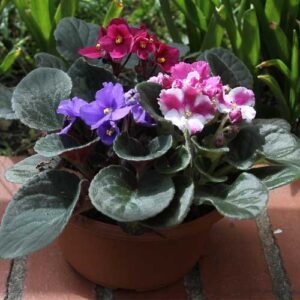About African Violet
African Violet Introduction
The African Violet (Saintpaulia ionantha) is a beloved houseplant known for its charming, velvety flowers and compact growth habit. Native to the tropical rainforests of eastern Africa, particularly Tanzania and Kenya, these plants have been cultivated for over a century and have become one of the most popular indoor flowering plants worldwide.
African Violets are characterized by their rosette-forming growth pattern, with leaves that are typically dark green, oval-shaped, and covered in fine hairs. The leaves grow in a circular pattern, forming a compact and attractive base for the plant. The flowers, which are the plant’s most striking feature, come in a wide range of colors including purple, pink, white, and blue, with some varieties featuring bi-colored or ruffled petals.
Despite their delicate appearance, African Violets are relatively hardy plants when given proper care. They are prized for their ability to bloom almost continuously throughout the year when provided with adequate light and care. Their compact size makes them ideal for small spaces, windowsills, or as part of larger indoor garden displays. African Violets have also been extensively hybridized, resulting in numerous cultivars with varying flower shapes, colors, and leaf patterns, offering plant enthusiasts a wide array of options to collect and cultivate.
African Violet Care & Growing Guide
Caring for African Violets can be a rewarding experience for both novice and experienced plant enthusiasts. These charming plants are known for their ability to thrive indoors and produce beautiful blooms year-round with proper care. To successfully grow African Violets, it’s essential to understand their specific needs and provide an environment that mimics their natural habitat.
First and foremost, lighting is crucial for African Violets. They prefer bright, indirect light but can be sensitive to direct sunlight, which can scorch their leaves. A north or east-facing window is often ideal, or they can be grown under fluorescent lights. Watering is another critical aspect of African Violet care. These plants prefer to be kept consistently moist but not waterlogged. It’s best to water from the bottom, allowing the plant to soak up water through the drainage holes, and avoid getting water on the leaves to prevent leaf spot diseases.
Temperature and humidity also play significant roles in the health of African Violets. They thrive in temperatures between 65-75°F (18-24°C) and appreciate higher humidity levels, typically around 50-60%. Regular feeding with a balanced, water-soluble fertilizer formulated for African Violets will promote healthy growth and abundant blooming. Lastly, these plants benefit from being planted in well-draining, slightly acidic soil and may require occasional repotting to prevent them from becoming root-bound. With attention to these care requirements, African Violets can be long-lived and provide continuous beauty in your home.
 Soil
Soil
African Violets thrive in well-draining, slightly acidic soil with a pH range of 6.0-6.5. The ideal soil composition is light and airy, typically a mix of peat moss, vermiculite, and perlite. This combination provides good aeration and moisture retention without becoming waterlogged. A specialized African Violet potting mix is often the best choice.
Good drainage is crucial to prevent root rot. The soil should retain moisture but allow excess water to drain freely. Adding organic matter like compost can improve soil structure and provide nutrients. African Violets prefer slightly acidic conditions, so using fertilizers or amendments designed for acid-loving plants can be beneficial.
Soil problems to watch for include:
1. Poor drainage: Can lead to root rot and fungal diseases.
2. Compaction: Restricts root growth and oxygen availability.
3. Inappropriate pH: Can affect nutrient uptake.
4. Salt build-up: Often from over-fertilization, can damage roots.
5. Nutrient deficiencies: May occur in poor-quality or depleted soil.
6. Root boundness: Can occur if the plant outgrows its pot, restricting growth and nutrient uptake.
Regular repotting with fresh soil every 6-12 months can help maintain optimal soil conditions and prevent these issues.
 Fertilizer
Fertilizer
African Violets benefit from regular fertilization during their active growing season (spring and summer). Use a balanced, water-soluble fertilizer specifically formulated for African Violets, typically with an NPK ratio of 14-12-14 or similar.
Fertilize every 2-4 weeks during the growing season, reducing to monthly or less in fall and winter. Always follow the package instructions, typically using the fertilizer at half strength.
Signs of over-fertilization:
– White crust on soil surface
– Leaf tip burn
– Stunted growth
– Wilting despite adequate watering
Signs of under-fertilization:
– Pale or yellowing leaves
– Slow growth
– Reduced flowering
Organic alternatives include:
– Compost tea
– Fish emulsion (diluted)
– Worm castings
African Violets are particularly sensitive to nitrogen levels. Excess nitrogen can lead to lush foliage but reduced flowering. They also benefit from micronutrients like iron and magnesium. If leaves show interveinal chlorosis (yellowing between veins), it may indicate an iron deficiency.
 Watering
Watering
African Violets prefer consistently moist soil but are sensitive to overwatering. Water when the top inch of soil feels dry to the touch. Use room temperature water, as cold water can shock the roots and cause leaf spots.
These plants prefer bottom watering to prevent water from sitting on leaves, which can cause leaf rot. Place the pot in a saucer of water for about 30 minutes, allowing the plant to absorb water through the drainage holes.
African Violets generally prefer slightly acidic water (pH 6.0-6.5). Distilled water or rainwater is ideal, as tap water may contain chlorine or fluoride that can harm the plant.
Signs of underwatering include:
– Drooping leaves
– Dry, crispy leaf edges
– Slow growth
Signs of overwatering include:
– Yellowing leaves
– Soft, mushy stems
– Mold on soil surface
Watering needs may decrease in winter and increase during active growth periods in spring and summer. Always adjust watering based on environmental conditions and the plant’s specific needs.
 Lighting
Lighting
African Violets thrive in bright, indirect light. They prefer 10-14 hours of artificial light or natural light from an east or north-facing window. Direct sunlight, especially during hot afternoons, can scorch leaves and damage flowers.
Signs of insufficient light include:
– Elongated, spindly growth
– Reduced flowering
– Darker, duller leaves
Signs of excessive light include:
– Yellowing or bleached leaves
– Burned or crispy leaf edges
– Wilting despite adequate watering
If natural light is insufficient, fluorescent or LED grow lights can be used. Position the lights 6-12 inches above the plants and provide 12-14 hours of light daily. For overly bright locations, use sheer curtains or move the plant further from the window to filter strong light.
 Temperature
Temperature
African Violets thrive in temperatures between 65-75°F (18-24°C) during the day and about 10°F cooler at night. They can tolerate brief periods outside this range but prolonged exposure to extreme temperatures can damage the plant.
These plants are sensitive to cold drafts and sudden temperature fluctuations. Keep them away from air conditioning vents, heating sources, and drafty windows.
In temperatures below 60°F (15°C), growth may slow, and the plant may become dormant. Above 80°F (27°C), leaves may wilt, and flower production may decrease.
To protect from extreme temperatures:
1. Use insulating curtains on windows during cold weather.
2. Move plants away from cold windowsills at night.
3. Provide shade or move to a cooler spot during heatwaves.
4. Use a fan for gentle air circulation to maintain even temperatures around the plant.
 Humidity
Humidity
African Violets prefer humidity levels between 50-60%. They can tolerate average household humidity but thrive in slightly higher levels.
Signs of low humidity stress:
– Brittle, dry leaf edges
– Flower buds dropping before opening
– Stunted growth
Signs of excessive humidity:
– Mold or mildew on leaves or soil
– Soft, mushy growth
– Increased susceptibility to fungal diseases
To increase humidity:
1. Use a pebble tray: Place the pot on a tray filled with pebbles and water, ensuring the pot doesn’t sit directly in water.
2. Group plants: Clustering plants together can create a microclimate with higher humidity.
3. Mist occasionally: Use room temperature water and mist in the morning to allow leaves to dry before night.
4. Use a humidifier: This is the most effective method for maintaining consistent humidity.
To decrease humidity, improve air circulation with fans or by opening windows. Avoid overcrowding plants and ensure proper spacing.
 Propagation
Propagation
African Violets can be propagated through leaf cuttings, which is the most common and successful method. Here’s a step-by-step guide:
1. Select a healthy, mature leaf from the middle of the plant.
2. Cut the leaf with about 1-2 inches of stem using clean, sharp scissors.
3. (Optional) Dip the cut end in rooting hormone to encourage faster root development.
4. Prepare a small pot with a well-draining potting mix suitable for African Violets.
5. Make a hole in the soil with a pencil and insert the stem at a 45-degree angle, ensuring the base of the leaf doesn’t touch the soil.
6. Water lightly and cover the pot with a clear plastic bag to maintain humidity.
7. Place in bright, indirect light and maintain warm temperatures (70-75°F or 21-24°C).
8. After about 4-6 weeks, gently tug on the leaf. If you feel resistance, roots have formed.
9. Once new leaves appear (usually after 2-3 months), remove the plastic cover gradually.
10. When the new plant is about 2 inches in diameter, transplant it to its own pot.
Leaf cuttings have a high success rate (around 80-90%) when conditions are optimal. Water propagation is another method, with a slightly lower success rate (70-80%).
The best time to propagate is during the growing season (spring to early summer). It typically takes 3-4 months for a new plant to establish from a leaf cutting.
 Potting
Potting
African Violets prefer small pots relative to their size, as they bloom best when slightly root-bound. Choose a pot that’s about 1/3 the diameter of the plant’s leaf spread.
Pot requirements:
– Material: Plastic or glazed ceramic (avoid porous materials that dry out quickly)
– Drainage: Must have drainage holes
– Size: Typically 4-5 inches in diameter for mature plants
Soil composition:
– Use a light, well-draining potting mix specifically for African Violets
– Or create a mix of 1 part peat moss, 1 part perlite, and 1 part vermiculite
Repotting frequency:
– Young plants: Every 6-12 months
– Mature plants: Every 1-2 years or when root-bound
Signs that repotting is needed:
– Roots growing through drainage holes
– Plant wilting despite proper watering
– Slowed growth or reduced flowering
– Soil drying out very quickly
Repotting process:
1. Water the plant a day before repotting to reduce stress.
2. Gently remove the plant from its current pot.
3. Prune any dead or rotting roots.
4. Place fresh potting mix in the new pot.
5. Position the plant so the crown is just above the soil line.
6. Fill in with more potting mix, gently firming it around the roots.
7. Water lightly and place in a shaded area for a few days to recover.
Minimize handling of the plant during repotting to reduce stress. Avoid fertilizing for about a month after repotting to allow the plant to adjust to its new environment.
 Pruning
Pruning
Pruning African Violets helps maintain their shape, promote bushier growth, and encourage blooming. Here’s a step-by-step guide:
- Timing: Prune as needed throughout the year, but avoid heavy pruning during winter when growth is slower.
- Tools: Use clean, sharp scissors or pruning shears. Sterilize tools with rubbing alcohol before use.
- Remove dead or yellowing leaves: Cut these off at the base of the stem, close to the crown of the plant.
- Trim leggy stems: If the plant has become elongated, cut back long stems to encourage bushier growth.
- Remove spent blooms: Pinch or cut off faded flowers to encourage new blooms and prevent energy waste on seed production.
- Shape the plant: Trim outer leaves to maintain the plant’s round shape. Never remove more than 1/3 of the plant’s foliage at once.
- Suckers removal: Gently remove any small plantlets (suckers) growing from the base of the main plant.
- After pruning: Water lightly and keep the plant in a shaded area for a few days to recover.
Special considerations:
– Always cut at a 45-degree angle to prevent water from pooling on cut surfaces.
– Avoid getting water on leaves when watering after pruning to prevent leaf spot diseases.
– Resume normal care after a week, including regular fertilization to support new growth.
 Blooming
Blooming
African Violets can bloom year-round under optimal conditions. Each bloom typically lasts 2-3 weeks, with new flowers continually forming. They prefer bright, indirect light, consistent moisture, and temperatures between 65-75°F (18-24°C) for optimal blooming. The flowers are usually 1-2 inches in diameter and come in a variety of colors and forms, including single, double, and semi-double petals. Check out my video on how to get African Violets to Bloom.
 Pests and Diseases
Pests and Diseases
Pests
Common issues
Cyclamen Mites, Stunted growth, distorted center leaves, flowers fail to open, Isolate affected plants, dispose of severely infested ones. Use miticide specifically for cyclamen mites. Increase humidity and air circulation.
Mealybugs, White, cottony masses on leaves and stems, Remove with cotton swab dipped in rubbing alcohol. For severe infestations, use insecticidal soap or neem oil.
Thrips, Silvery or bronzed patches on leaves, distorted growth, Use sticky traps to monitor. Apply insecticidal soap or neem oil. For severe cases, use systemic insecticide.
Diseases
Common issues
Crown Rot, Soft, mushy stems at soil level, wilting despite moist soil, Remove affected parts, reduce watering, improve air circulation. In severe cases, take leaf cuttings to propagate a new plant.
Botrytis Blight, Gray mold on leaves, flowers, and stems, Remove affected parts, reduce humidity, improve air circulation. Apply fungicide if necessary.
Powdery Mildew, White, powdery coating on leaves, Improve air circulation, reduce humidity. Apply fungicide specifically for powdery mildew if needed.
 Special Features
Special Features
African Violets are prized for their ability to bloom almost continuously throughout the year when given proper care. They come in a wide variety of flower colors and patterns, including single and double blooms, ruffled petals, and bi-color varieties. Their compact size makes them ideal for small spaces and windowsills, and they are known for their velvety, dark green leaves that form an attractive rosette pattern.
 Plant Benefits
Plant Benefits
While African Violets are primarily grown for ornamental purposes, they have been associated with some potential benefits. They are known to help purify indoor air to a small extent. Some studies suggest that caring for houseplants like African Violets can have positive effects on mental health, reducing stress and improving mood. However, African Violets are not typically used for medicinal or herbal purposes.
 Additional Information
Additional Information
African Violets are not true violets but belong to the Gesneriaceae family. They were discovered in 1892 by Baron Walter von Saint Paul-Illaire in Tanzania, hence their scientific name Saintpaulia. These plants have been extensively hybridized, resulting in thousands of cultivars with various flower colors, shapes, and leaf patterns. They are popular in the hobby of competitive growing and showing, with many African Violet societies worldwide dedicated to their cultivation and exhibition.
 Life Cycle
Life Cycle
African Violets are perennial plants that can live for many years with proper care. Their life cycle begins with seed germination or, more commonly in cultivation, with leaf cuttings. Young plants grow rapidly, developing their characteristic rosette form. Under optimal conditions, they can begin flowering within 6-9 months from propagation. African Violets do not have a dormant period and can grow and bloom year-round if conditions are favorable. With proper care, including regular repotting and division of crowns, these plants can live indefinitely, often becoming family heirlooms passed down through generations.
 Are African Violet Poisonous, Toxic
Are African Violet Poisonous, Toxic
African Violets are generally considered non-toxic to humans, cats, and dogs. While ingestion may cause mild gastrointestinal upset, serious poisoning is rare. However, the leaves and stems can cause skin irritation in some individuals due to the fine hairs. If ingestion occurs, monitor for symptoms such as vomiting or diarrhea. Rinse the mouth with water and seek medical advice if symptoms persist. To prevent issues, keep plants out of reach of pets and children, and wear gloves when handling to avoid skin irritation.
 Frequently Asked Questions
Frequently Asked Questions
How often should I water my African Violet?
Water African Violets when the top inch of soil feels dry to the touch, typically every 5-7 days. It’s best to water from the bottom to avoid getting water on the leaves.
What kind of light do African Violets need?
African Violets prefer bright, indirect light. An east or north-facing window is ideal. They can also thrive under fluorescent lights for 12-14 hours daily.
How do I propagate African Violets?
African Violets are typically propagated through leaf cuttings. Cut a healthy leaf with about 2 inches of stem, plant it in moist potting mix, and keep it humid until new growth appears.
Why are my African Violet’s leaves turning yellow?
Yellowing leaves can be caused by overwatering, poor drainage, or nutrient deficiencies. Ensure the plant is not sitting in water and is receiving proper fertilization.
How often should I fertilize my African Violet?
Fertilize African Violets every 2-4 weeks during the growing season with a balanced, water-soluble fertilizer specifically formulated for African Violets.
Why isn’t my African Violet blooming?
Lack of blooming can be due to insufficient light, improper fertilization, or the plant being root-bound. Ensure it’s getting enough light and nutrients, and consider repotting if necessary.
How do I repot an African Violet?
Repot African Violets every 6-12 months or when root-bound. Use a pot slightly larger than the current one with fresh, well-draining potting mix. Be careful not to bury the crown of the plant.
Are African Violets toxic to pets?
African Violets are generally considered non-toxic to cats and dogs. However, ingestion may cause mild gastrointestinal upset in some animals.
How do I increase humidity for my African Violet?
Increase humidity by using a pebble tray, grouping plants together, or using a humidifier. Avoid misting the leaves directly as this can lead to leaf spots.
How long do African Violets live?
With proper care, African Violets can live indefinitely. Many plants have been known to thrive for decades, often becoming family heirlooms.
 Can I grow African Violet in my indoor space
Can I grow African Violet in my indoor space
Difficulty
Size
Light
Water
Flowering
Pet Safe
Air Purifier
 Saintpaulia ionantha botanical details
Saintpaulia ionantha botanical details
Common Name
Other Common Names
Botanical Name
Native Area
Family Name
Plant Type
Genus
Kingdom
 Photo Gallery
Photo Gallery
- Perky Plant fertilizer: https://amzn.to/3RdLA00
- Seaweed extract: https://amzn.to/3z2CsFh
- Rooting hormone: https://amzn.to/3bIXi0t
- Espoma fertilizer: https://amzn.to/3vPa9bs
- Worm compost: https://amzn.to/3HVL01u
- Full-spectrum Light Bulb-Large: https://amzn.to/3yR6VBu
- Full-spectrum Lighting: https://amzn.to/3qhhaiv
- Light meter: https://amzn.to/4dpmp3s
- Moisture meter: https://amzn.to/3TEUu5N
- Hygrometer: https://amzn.to/3Cf6h2F
- Pruning shears: https://amzn.to/3X6oOcg
- ProMix Potting Soil: https://amzn.to/3iVIrjE
- My Organic Green Gourmet Houseplant Fertilizer: healthyhouseplants.storenvy.com
- My Perfect Pumice: Healthy Houseplants Store
- My Organic Green Gourmet Houseplant Fertilizer: Healthy Houseplants Store
As an Amazon Associate, I earn commission from qualifying purchases.
 Plant Puns and Jokes
Plant Puns and Jokes
Why did the African Violet go to therapy? It had too many issues with its roots!




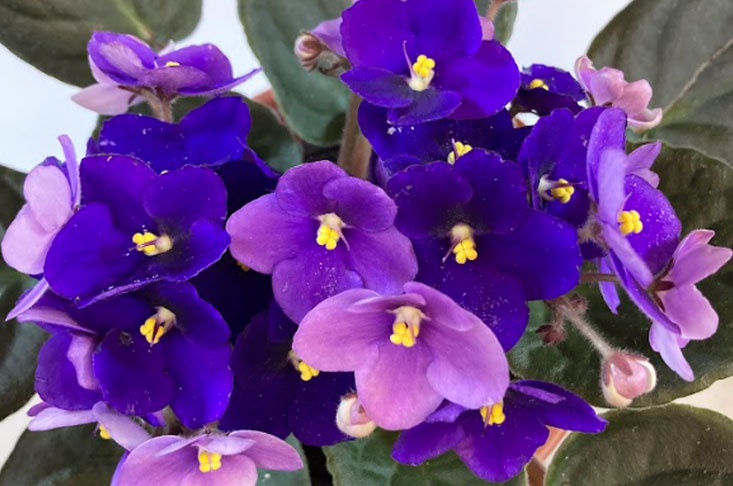
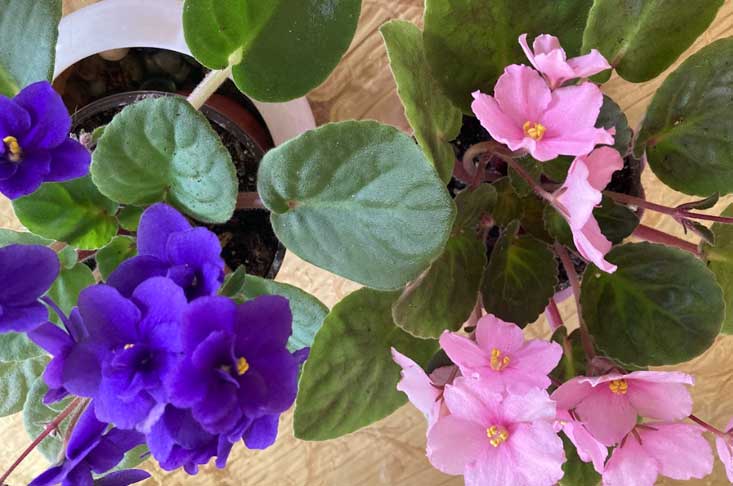
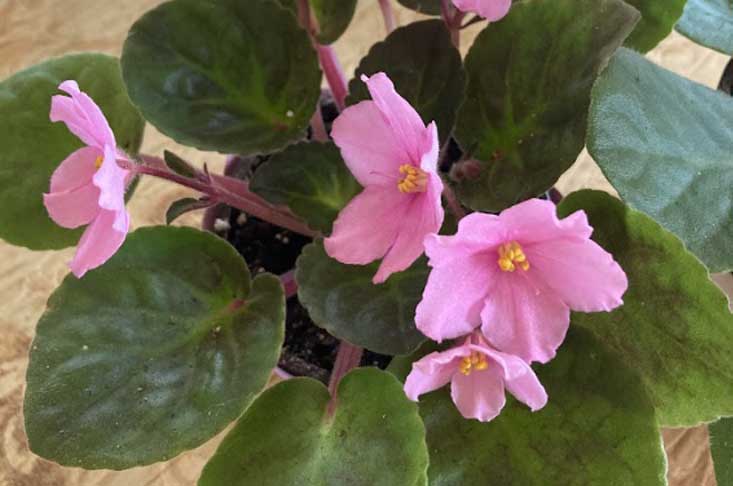
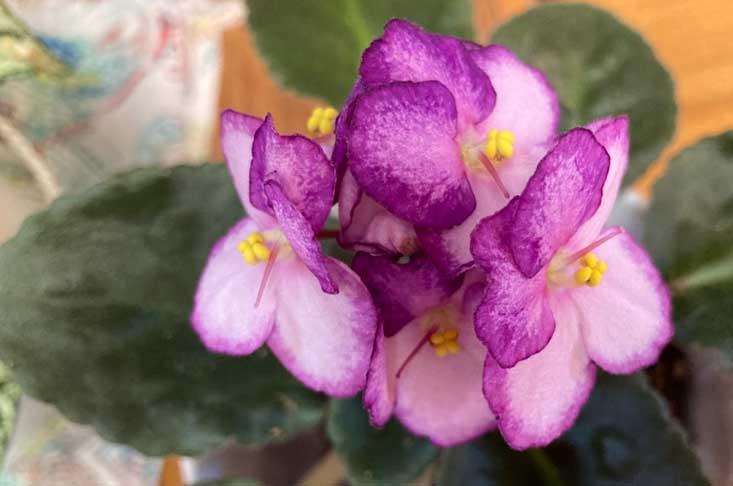
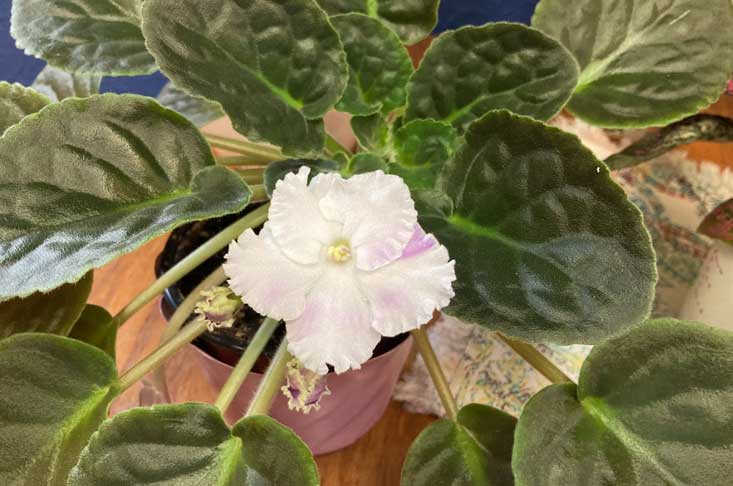
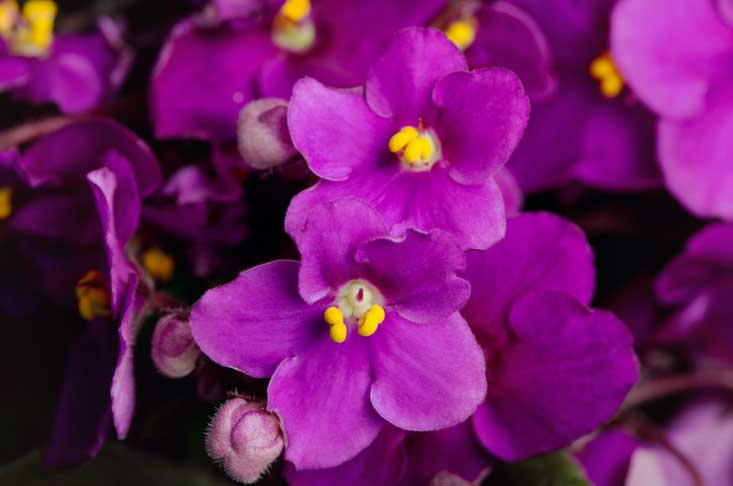
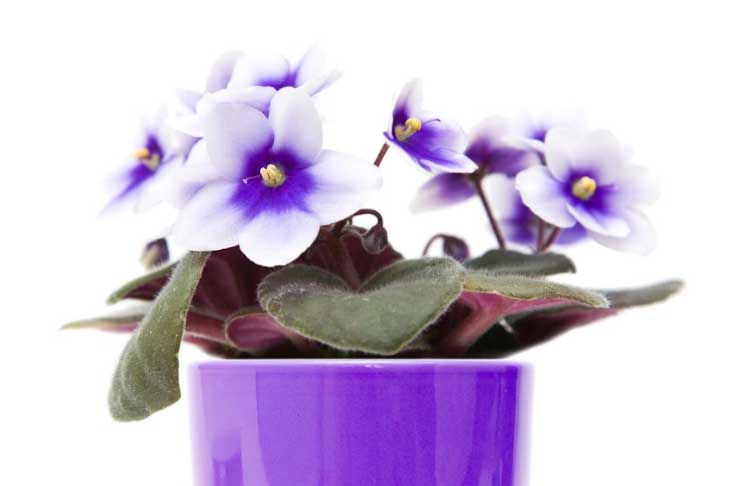
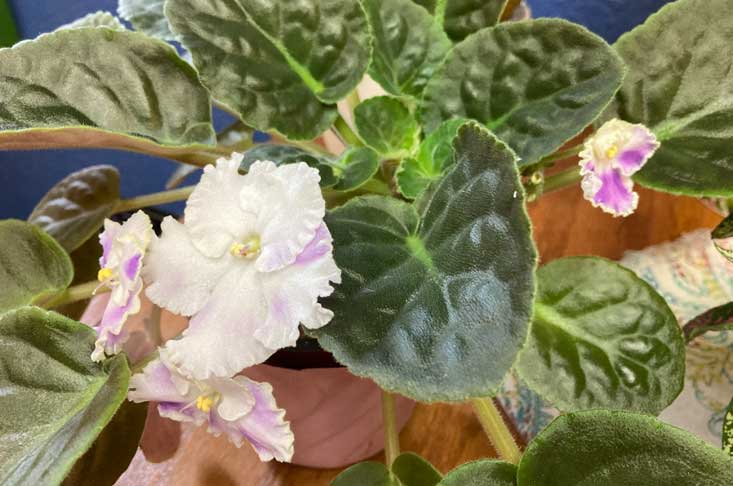
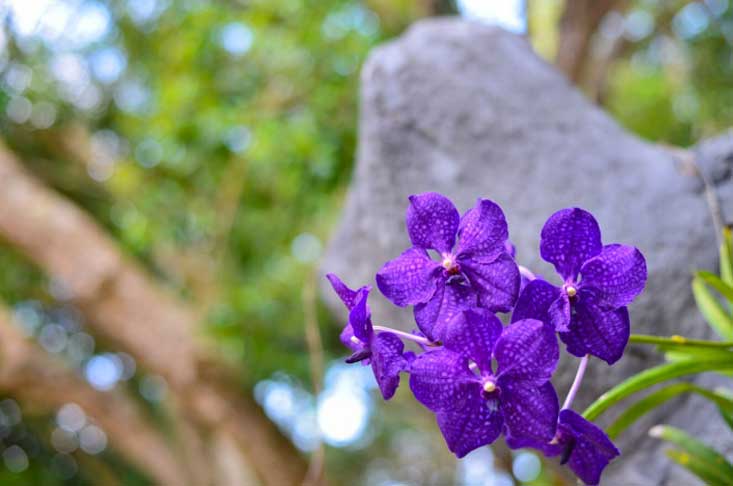

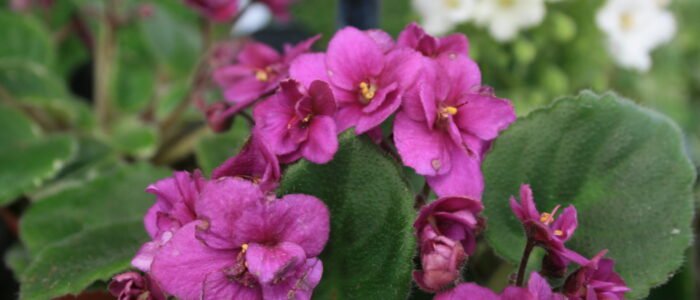
 My African Violet Plant Care Recommendations
My African Violet Plant Care Recommendations Buy African Violet Online
Buy African Violet Online